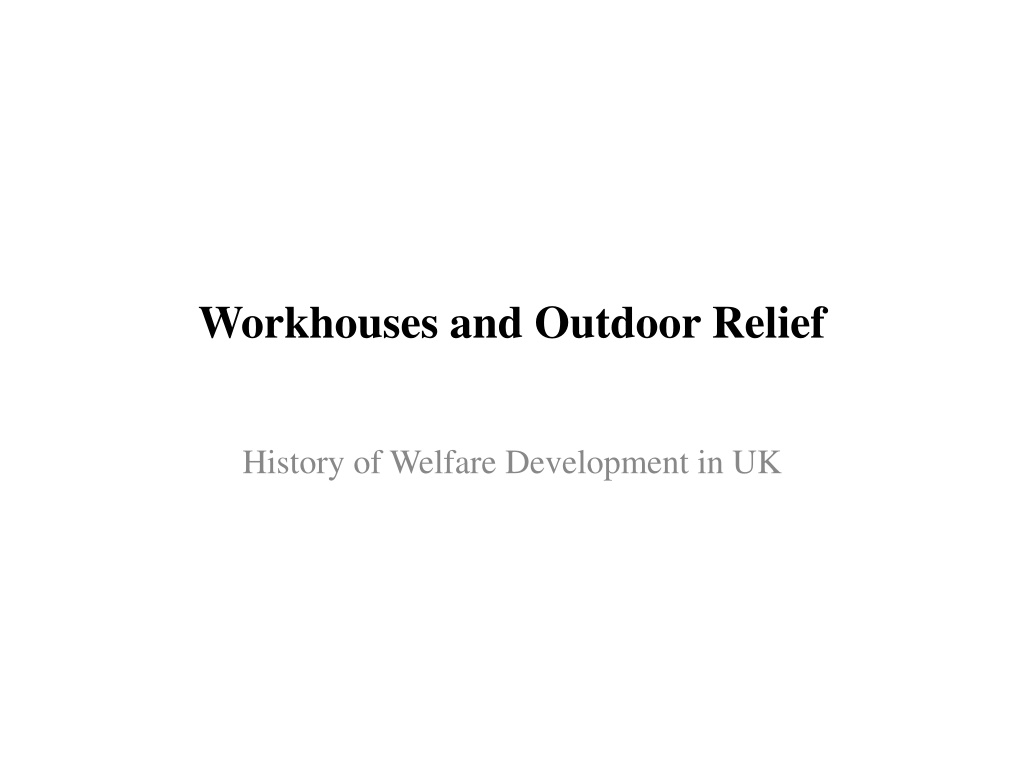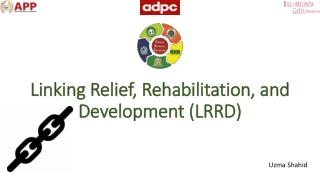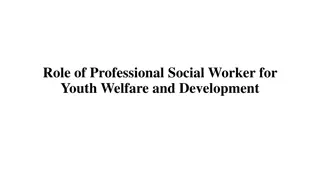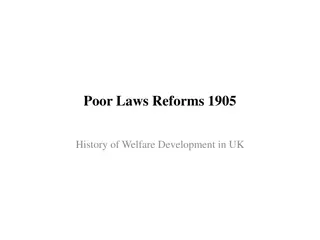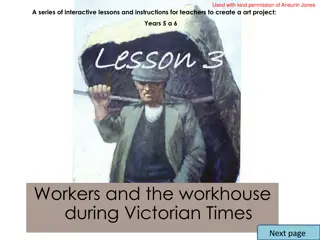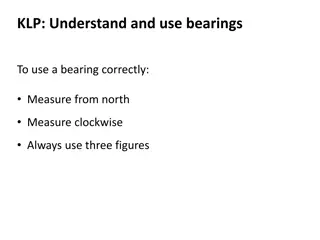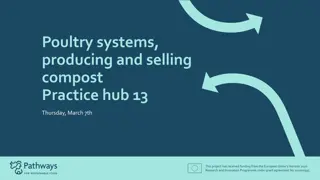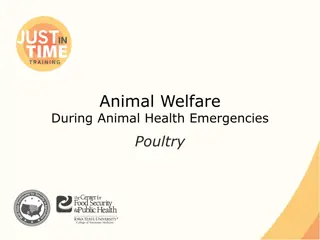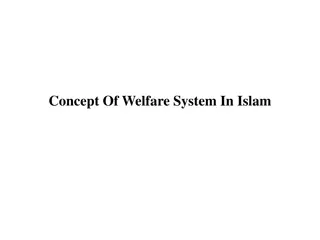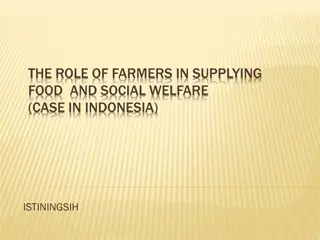History of Welfare Development in UK: Workhouses and Outdoor Relief
During the 17th and 18th centuries, workhouses and outdoor relief systems in the UK faced challenges in providing effective assistance to the poor. Initiatives like training the poor in various skills and contracting paupers for work failed to yield economic success. Criticism arose due to mistreatment of inmates, poor living conditions, and high mortality rates, leading to reforms such as the Gilbert Act of 1782 which aimed to improve conditions and shift towards providing relief to those willing and able to work.
Download Presentation

Please find below an Image/Link to download the presentation.
The content on the website is provided AS IS for your information and personal use only. It may not be sold, licensed, or shared on other websites without obtaining consent from the author. Download presentation by click this link. If you encounter any issues during the download, it is possible that the publisher has removed the file from their server.
E N D
Presentation Transcript
Workhouses and Outdoor Relief History of Welfare Development in UK
During the second half of the seventeenth century, the English were in fierce commercial competition with the Dutch, who had succeeded in developing an efficient industry and trade. English economist admired the absence of beggars in the streets and productive operation of the Dutch almshouses, in which inmates manufactured goods for export. The desire to keep raw materials, wool, and mining iron in England and to produce finished goods for export led to the training of the English poor industry. Following the Workhouse Act of 1696, workhouses in Bristol and other cities instructed the inmates, children as well as adults in spinning, knitting, linen weaving, lace work, and in the manufacture of nets and sails. However, these experiments had no economic success since the unemployed poor had no particular training and could not compete with workshops employing skilled foremen and laborers.
In 1722 the overseers were at authorized to make contracts with private manufactures who employed the paupers, and relief was refused to any person not willing to enter the workhouse. This workhouse test forced families to give up their homes and to live in the workhouse as in a prison, the men separated from their wives and children. Many paupers preferred to live in utmost poverty with their families rather than to move to the workhouse or house of correction. Workhouses conducted by private contractors to make profits by spending as little as possible for equipment and repair and for the food and clothing of the inmates. As a result, the work of the tired and hungry inhabitants was so inadequate that the contractors still operated at a loss.
The mistreatment of the inmates, the lack of fresh air and proper sanitation, and the immortality in the overcrowded wards aroused serious criticism from ministries and social reformers. The first of the crusaders for a reform of the workhouse, Jonas Hanway, spent several years studying these institutions. He exposed the appalling rate of infant mortality in the workhouse where sometimes 82 percent of all babies under one year of age died. In 1761, on the incentive of Hanway, Parliament attempted to improve these conditions by the registration of all the infants in workhouses and, In 1767, by the removal from the workhouse of all children under six years and their placement with the foster families.
One of the most persistent reformers was Thomas Gilbert, As a magistrate he knew of the failures of the poor laws, but as member of the House of Commons he could appraise them with more effect. The Poor Law Amendment of 1782, knows as the Gilbert Act, abolished contractor system of workhouse, replaced the honorary overseers of the poor by salaried guardians of the poor. and reversed the principle of indoor relief by providing that persons able and willing to work should be maintained in their homes until employment was procured.
Economic changes in England, however, were a continuous source of increasing poverty. For centuries poor people had used the common of the village. They had grown vegetables, potatoes, barley and wheat for their families and grazed their sheep, geese, pigs, or cows, thus supplementing the meager earnings from their small fields or from work as tenant farmers. The enclosure movement, which began in the fourteenth century, enlarged the holdings of the landed aristocracy, but took away from the peasants the livestock and products that had enabled them to maintain their families In industry, the invention of power machinery driven by wind or water transferred production from villages and small towns to larger cities where water transportation was available. The place of manufacture shifted from home to workshop and the mill. The growth of industry tended to increase the number of workers, but the new machinery in the mills replaced many of the hand weavers, creating unemployed paupers and vagrants.
Source: Book title Introduction to Social Welfare Author: Walter A. Friedlander Robert Z. Apte
